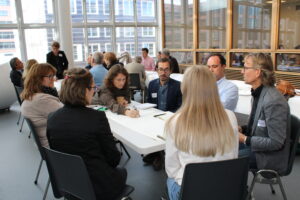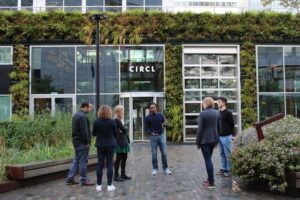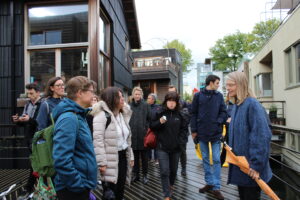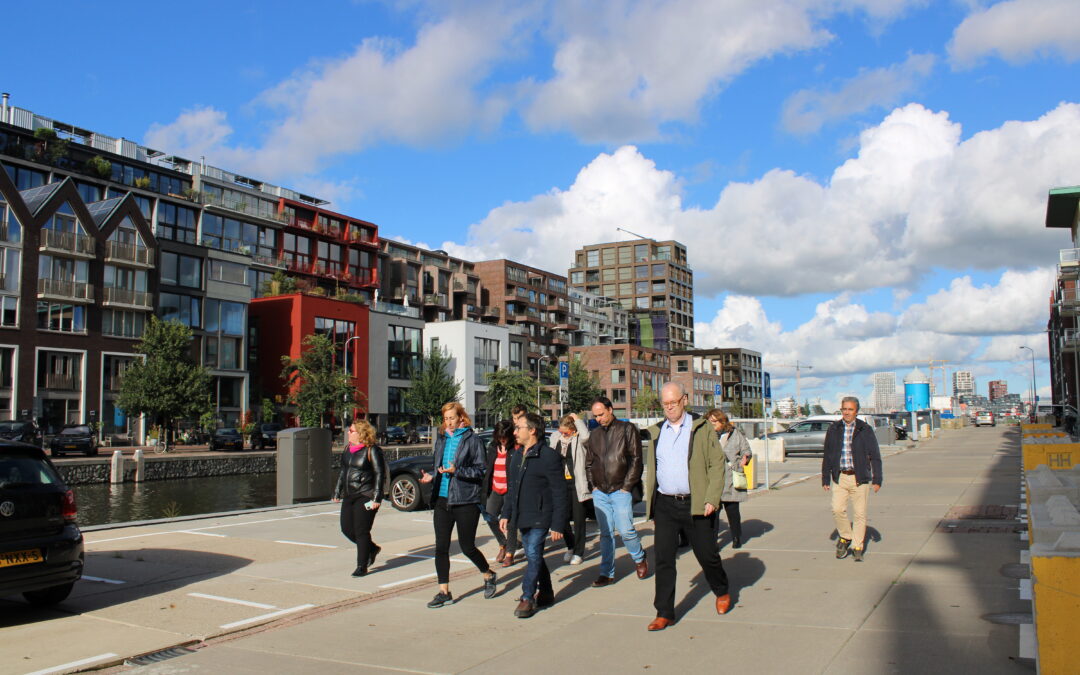October 5 and 6, the 1st live ATELIER event took place after Covid-19. The capacity building activities, part of Work Package 6, brought all city partners and Tecnalia to Amsterdam. The Amsterdam University of Applied Sciences (AUAS) organized a successful program at various sustainable locations in the city.
For those who arrived the day before, partner AMS-Institute presented the LIFE project. This smart energy exchange platform focuses on electricity grid-friendly and community inclusive innovation in the Amsterdam neighbourhood ArenApoort.
The interactive workshop sessions were scheduled over two days:
- The energy system of a PED and components with examples of the Lighthouse cities, led by AUAS, the city of Amsterdam and Bilbao.
- Innovation Ateliers, led by TNO.
- City vision, led by Tecnalia and the city of Amsterdam.
- How to calculate PED balance with examples of the Lighthouse cities, led by CARTIF, AUAS, the city of Amsterdam and Bilbao.
- Citizen Engagement, led by Waag Society.

Workshop on Capacity Building event in Amsterdam. Credits: Amsterdam University of Applied Sciences
The 2nd day workshops took place at the circular platform and pavilion CIRCL in the Amsterdam business neighbourhood ZuidAs. This was the first constructed practical example of sustainable and circular designs in 2017.

ATELIER partners visiting CIRLCE. Credits: Amsterdam University of Applied Sciences
Buiksloterham
After the fruitful meetings it was time to stretch some legs! In typically Dutch weather (rather rainy), the bus driver dropped off the group of ATELIER partners close to the Republica building, where the construction workers were just finishing their working day. Everybody could see that the basement had almost been completed and that in various places on the 80×80 meter construction site, the ground level has been reached. On the trip to the site of Poppies (the other building block of the PED), the participants were informed of the great variety of private dwellings that were realized under the so-called CPO scheme (Collectief Particulier Opdrachtgeverschap). This scheme is used in Amsterdam to provide more impact to the inhabitants in realizing dwellings of their choice, within boundaries of size and performance level. Some like the variety, some find it messy. Passing by Poppies, the group headed to the Waternet floating office to catch a glimpse of the Resource Recovery Station that is temporarily floating in the Papaverhaven. Finally, a tour of the Schoonschip floating community took place where the group had interesting discussions with the tour leaders (inhabitants of the community) on their experience.

Participants visiting Schoonship floating community. Credits: Amsterdam University of Applied Sciences
Dry in the meantime, the group then headed to the restaurant in Houthaven under a sunny sky, taking the typical Amsterdam IJ-ferry.
Houthaven
Houthaven is an Amsterdam development area that started construction back in 2014 and which was the first Amsterdam neighbourhood with a climate-neutral ambition. In the area, where land has been gained from the river IJ, the first stop was the energy positive building, where an enthusiastic inhabitant explained the development track of the building and his living experience since 2018, when the building completed. The building is the result of a tender in which Amsterdam challenged developers to come up with a plan for the most energy positive building they could build. The positive energy balance of the building is realized by a massive amount of around 300 kWp PV (for 17 apartments) and heating by heat pumps in an all-electric architecture (Learn more).
The Houthaven area is mainly heated by district heating. In order to combat possible overheating in the energy efficient buildings, so-called comfort cooling is provided. This is accomplished by storing cold from the river IJ in winter in the underground and using this coldness in the floor tubing system in the dwellings in the summer. This system is managed by a “cold station”, which was visited too. The tour was rounded of by a walk to the other side of the district, where the bus was waiting.
Picture 1: Site visit to Houthaven. Credits: City of Amsterdam
